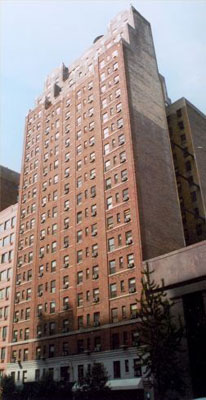Newsfeed Categories
Community CornerFundingNew York StateNew York CityFederalResearchPressMember NewsOpeningsGroundbreakingsNetwork Events
Sequestration Strikes HSI: An Interview with Jim Dill
Sep.26.2013
 Over the past few months, the Network has fought to highlight the often-ignored effects of budget sequestration on low-income individuals and housing programs. In the below interview, we speak with Jim Dill, Executive Director of Housing & Services, Inc. (HSI), a supportive housing provider in New York City. Jim tells us about sequestration and its continued effects on HSI’s supportive housing residences and the vulnerable tenants they house. He speaks in particular about two residences: The Kenmore and The Cecil. To learn more about sequestration’s impact on the poor and formerly homeless, see our Sequestration Stories page.
Over the past few months, the Network has fought to highlight the often-ignored effects of budget sequestration on low-income individuals and housing programs. In the below interview, we speak with Jim Dill, Executive Director of Housing & Services, Inc. (HSI), a supportive housing provider in New York City. Jim tells us about sequestration and its continued effects on HSI’s supportive housing residences and the vulnerable tenants they house. He speaks in particular about two residences: The Kenmore and The Cecil. To learn more about sequestration’s impact on the poor and formerly homeless, see our Sequestration Stories page.
The Network: Kenmore Hall provides housing and services to 325 of New York’s most vulnerable citizens. How has sequestration impacted the well-being of the residence and its tenants?
Jim Dill: The Kenmore currently has seven vacant apartments attributable to sequestration. The sequester has led to a freeze on new tenant-based Section 8 vouchers. We are scrambling now to see if we can fill these empty units with another referral source. This is proving quite difficult, because tenants at Kenmore must meet HUD’s criteria for homelessness and have a rent subsidy. In the meantime, seven perfectly good apartments at the Kenmore remain vacant. Housing and services at this residence costs roughly $14,000 per year. That’s cheaper than any of the alternatives for New York’s most vulnerable: shelters, jails, hospitals, rehab, etc. It costs about $28,000 a year, for example, to house a single adult in a DHS shelter. That’s a $14,000 difference per person. With these seven vacancies, we could save the city at least $98,000 a year. Instead, because of sequestration, the apartments are just sitting there.
Has sequestration jeopardized the building’s day-to-day operations?
Yes. In accordance with our regulatory agreements, our tenants must have very low incomes and their rent is restricted to 30% of whatever they make. In the past, any rent increases would be funded through Section 8. Sequestration has frozen such rent increases.
